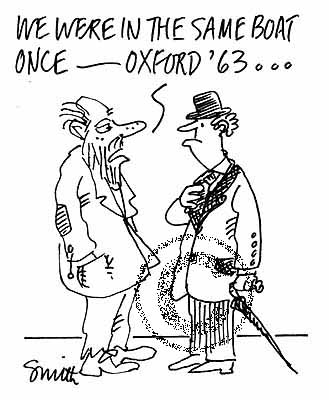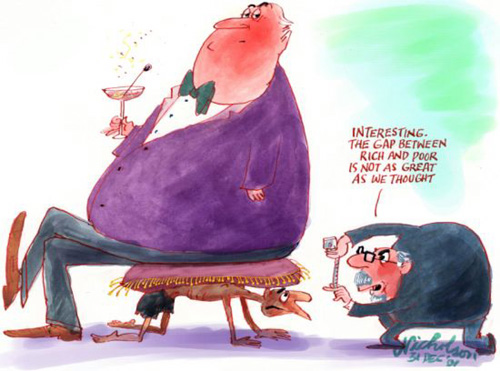The explosion of poverty in Western countries

1, Nearly a fifth of Greeks (19.6%) live below the poverty line, according to a study made public by the Greek Ministry of Economy. (Belga 01/18/2007).
2, The gap between the rich and the poor in the United States is increasingly wide and the number of people having fallen into extreme poverty has never been higher in 30 years, reported an American study published on Saturday . Nearly 16 million Americans (more than 5% of the total population) live in “deep and severe poverty”, or with an income of less than 9,903 dollars (7,540 euros) per year for a family of four, including two children, indicates a study based on the last American census dating from 2005, the McClatchy Newspapers analysis. Per individual, the individual “deep poverty” threshold corresponds to people whose income does not exceed 5,080 dollars (3,868 euros) per year. “The McClatchy analysis found that the number of very poor Americans increased 26 percent from 2000 to 2005,” the study continues. This increase “exceeds the growth of the entire poor population during the same period by 56%,” he notes. (La libre 02/25/2007)
3, The economic growth observed over the last three years has halved, thus contributing to the increase in unemployment, which affects nearly 20 million people in the European Union, largely majority of women, and reached worrying levels of poverty and social exclusion, knowing that according to the latest known data relating to 2001, nearly 70 million people live in precarious situations, and that the Lisbon objectives foresee for 2010 , an overall employment rate of 70% and a female employment rate of 60%. (Report from the European Parliament of 02/25/2005).
4. In 2004, France had 6.9 million poor people, with less than 788 euros per month to live on. (…) Nearly a quarter of the population (22%) belongs to one or other of these categories (recipients of the minimum integration income or people combining difficult living conditions and low resources leading to deprivation) . (…) Over the same period, the composition of the poor population has changed significantly. It has fewer large families and more single people and single-parent families. (Le Monde 03/27/2007)

These data first show the return and generalization of the phenomenon of poverty.
The method of calculating the poverty threshold used by the World Bank uses an identical absolute poverty threshold for all countries on the planet, while the French INSEE calculates a relative threshold corresponding to half of the European median income, which which is an aberration. If, for example, the income of each resident increases or decreases by 20%, the threshold also increases or decreases by 20% and the number of poor people remains unchanged. But this is probably what happened: according to Eurostat, while in 1992, France and reunified Germany both had a GDP per capita of 108.8, for an average of 100 in Europe, in 2001 Germany found itself in seventh place (104.4), while France fell to twelfth place, below the European average (99.6). It is likely that the phenomenon of poverty is therefore underestimated by the INSEE calculation. Intentionally or not, the data remains poorly known, as the European Parliament points out.
To determine the poverty line, it is best to try to establish the cost of all the essential resources that an adult consumes on average in a year. This approach is based on the assessment of the minimum expenditure to ensure a tolerable standard of living. In certain industrialized countries such as the United States or Canada, such an absolute threshold is used; it corresponds to a basket of essential goods and services, and it is updated according to changes in the cost of living.
Then, we note that poverty can spread just as well in a context of extraordinary economic expansion, as in the US. This comes from the fact that this “economic” prosperity (in reality, financial and stock market) is very often obtained by making cuts in jobs. The people affected are impoverished in a more or less direct and lasting way and become recipients of social income. Which means for companies and their shareholders to have the increase in profits financed by the community.
In fact, the poverty of some grows at the same time as the wealth of others grows. So in France for example, the 10% worst off receive only 3% of the total income, and the 10% best off receive 24.8%, this after taxes and social benefits (Observatoire des Inégales, 12/2006).
Finally, the new poverty hits single people or single-parent families more, and therefore those who experience a weakening of their social capital. Without the erosion of social capital, the homeless phenomenon would not be possible.
It is also appropriate to add to these forms of impoverishment the tremendous decline in the cultural capital of social classes given over to the crisis of language, the disappearance of traditional values of knowledge and progress, and the incoherence due to ethnic mixing. ; the decline of educational supervision and the quality of school programs; to the seizing up of the transmission of cultural knowledge and social disciplines (barbarization and decompetence), to the disappearance of popular culture in favor of the passivized stupefaction of the electro-audiovisual. It is a more qualitative and cultural form of poverty, and which is no less serious in the long term.
All this outlines the contours of the recomposition of the class structure of our societies, as desired by the ruling power from the mid-1970s.










